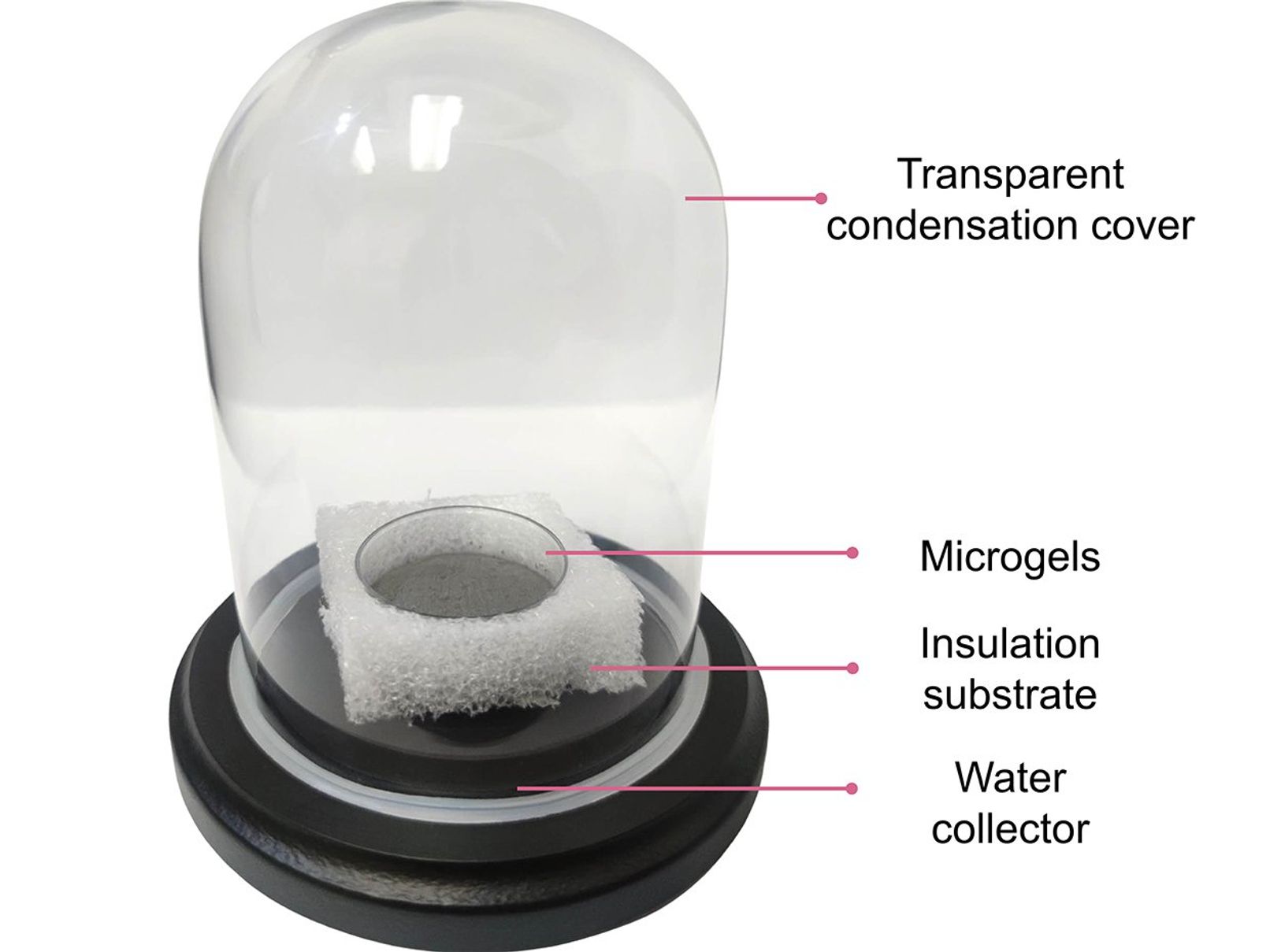Energy-Efficient Hydrogel Pulls Water From Air
Published on by Water Network Research, Official research team of The Water Network in Technology
Using a new kind of hydrogel material, researchers at the University of Texas at Austin have pulled water out of thin air at temperatures low enough to be achieved with sunlight.
Atmospheric water harvesting draws water from humidity in the air. If the humidity levels are high enough, a system can pass fog through a mesh or cool the air below the dew point to condense the moisture and collect liquid water. But in low-humidity conditions and arid areas, water vapor has to be extracted directly from the air as a gas.
The UT Austin technique is aimed at the latter. It has two key steps, first acting like a dehumidifier to collect the water, then releasing it for use. Other researchers have looked into similar methods for absorbing water vapor using material such as silicas and metal organic frameworks, which “have their own pros and cons,” says Guihua Yu, a professor of engineering at UT Austin who led the research, published 11 September in Proceedings of the National Academies of Science .

Many of the materials used to pull humidity from air come with one particular con: If the substance absorbs water easily, it also requires a significant amount of energy to release that water later. Yu’s team has developed a new synthetic material to potentially address this key complication. The material is a hydrogel, a polymer network that naturally retains a lot of water. But the new material requires less energy to release that water than other hydrogels, making it possible for the system to operate with sunlight as the sole energy source.
Attached link
https://spectrum.ieee.org/atmospheric-water-harvestingTaxonomy
- Water from Air